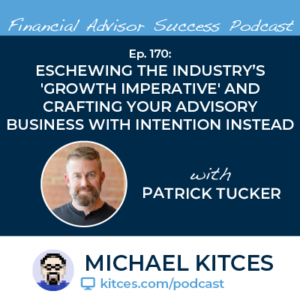Last week, Congress passed the Coronavirus Aid, Relief, and Economic Security (CARES) Act, a $2 trillion emergency fiscal stimulus package with the aim of mitigating the economic damage created by the Coronavirus pandemic by introducing a wide range of provisions for individuals, businesses, healthcare entities, and state and local governments to meet short-term cashflow demands. For financial advisors with clients who are small business owners (including self-employed individuals and independent contractors), or for financial advisors who are business owners themselves, one of the most compelling provisions of the Act is the Paycheck Protection Program, which authorizes up to $349 billion in forgivable loans, allowing small businesses to pay their employees during the crisis.
Small business owners who have 500 or fewer employees (with limited exceptions), including self-employed individuals, may be able to benefit from the program and can request loans for up to 2.5 times the average monthly payroll expense over the previous year (with total loan amount capped at $10M). Applicants must make a good-faith certification that the loan is necessary due to the uncertainty of current economic conditions caused by COVID-19.
For small businesses and sole proprietorships, applications will be accepted beginning on April 3, 2020, and for independent contractors and self-employed individuals, applications will be accepted beginning on April 10, 2020. Loans will have a maturity period of 2 years and a fixed interest rate of 0.50%. Notably, any amounts spent on certain items during the first 8 weeks after the loan is made may be eligible for forgiveness. As an added benefit, amounts that are forgiven will even be excluded from taxable income for the year! Expenses that will be eligible for forgiveness include:
- Payroll costs, including benefits, which include:
- Wages and other compensation capped at $100K per employee;
- Vacation, parental, family, medical, and sick leave benefits; and
- State/local tax on compensation.
- Rent pursuant to a lease in force before February 15, 2020;
- Utilities which began before February 15, 2020; and
- Interest on mortgage obligations incurred before February 15, 2020.
In order to qualify for forgiveness of these expenses, the business must maintain the same number of employees in the eight weeks following the date of loan origination that it had from either February 15, 2019, through June 30, 2019, or from January 1, 2020, through February 29, 2020. However, business owners have the opportunity to restore employment and salary levels until June 30, 2020, for any changes that occurred between February 15, 2020, and April 26, 2020. Additionally, compensation for employees who receive less than $100,000 annually cannot be reduced by more than 25% relative to the most recent quarter. To the extent these requirements are not met, the amount eligible for forgiveness will be reduced.
While loan payments will be deferred for a period of six months, interest on outstanding amounts will accrue during this time. Loans are provided by lenders approved by the SBA and will be guaranteed by the SBA.
Of particular importance is the first-come, first-serve nature of the Paycheck Protection Program. Ultimately, this means that applying soon, as early as tomorrow, April 3, 2020, may give a business the best chance to receive a loan that may ultimately be forgiven.
Thankfully, the Paycheck Protection Program loan application is a fairly straightforward 4-page document that is already available online. Institutions that will be able to accept the applications and originate these loans on behalf of the SBA include SBA-approved lenders, Federally insured banks and credit unions, and other lenders that who are specially approved by the SBA to offer Paycheck Protection Loans.
Advisors should also consider how Paycheck Protection Program loans may impact other benefits available via the CARES Act. Notably, acceptance of such a loan makes a business ineligible for the Employee Retention Credit (of up to 50% of up to $10,000 of wages per employee), while forgiveness of such a loan makes a business ineligible for the deferral of payroll taxes (through the end of 2020) that would otherwise be allowed.
Ultimately, the key point is that the Paycheck Protection Program offers advisors and other small business owners an incredible opportunity of relief from the crisis at hand, and financial advisors can play a key role in helping their clients navigate the process of applying for and managing the use of loan proceeds.

 Welcome back to the 170th episode of Financial Advisor Success Podcast!
Welcome back to the 170th episode of Financial Advisor Success Podcast!

